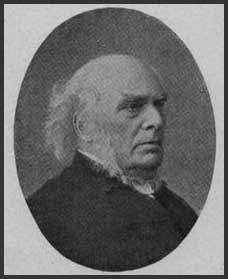He Gained the Martyr’s Crown
The enemies of the Covenanters had very long memories. Long after sermons were preached or actions taken, the authorities in Scotland remembered words and actions against them. Such was the case with a young minister by the name of Hugh McKail.
A child of the manse, from Bothwell, Scotland, his pastor father was one of those forced out of his pulpit and parish when he refused to conform to Prelacy. Little is known of young Hugh’s early days, but he did go to Edinburgh for education. There he was soon marked out as a young man of exceptional ability. For that, upon graduation, he was chosen to be a chaplain and tutor of the Lord Provost of Edinburgh, Sir James Stewart. In that Covenanter home, he would sit at the feet of those in leadership positions in the church and learn of the dire situation facing both the church and the state.
In 1661, he applied to the Presbytery for licensure in the ministry. Preaching in a variety of situations, he was quickly recognized by his hearers for his great ability in the Word of God. However, his ministry soon came to an end as it became obvious that he wouldn’t compromise his convictions, just as his father before him. Preaching his last sermon in a church in Edinburgh, he had a sentence in it which marked him for remembrance by the Prelate forces of his day. He said, “the Church is persecuted by a Pharaoh on the throne, a Haman in the State, and a Judas in the Church.” The identification was obvious to all in the pews that day.
Forced to leave his beloved Scotland, the young twenty-six year old would spend the next three years in Holland. On his return to Scotland, the situation had not improved any and there was a spark of rebellion in the air. That spark was ignited, as my post on November 28 indicated, at the Battle of Rullion Green. Hugh McKail was among the nine hundred in the Covenanter ranks that day. But his own physical weakness removed him before that great battle arrived, and he traveled to Edinburgh instead. There he was arrested by the authorities, not so much for his Covenanter attachments as for his statement made in that Edinburgh church some years before.
Interrogated in prison, he was placed in the Boot, a fearful torture device which all but crushed his leg while he remained silent in voice. He was ordered to die by hanging on December 22, 1666. His exact words that day of death have been preserved through the ages. They were:
Farewell father, mother, friends, and relations; Farewell the world and its delights; farewell meat and drink; farewell sun, moon, and starts; Welcome God and Father; welcome sweet Jesus Christ the mediator of the New Covenant; welcome blessed Spirit of grace, the God of all consolation; welcome glory, welcome eternal life; welcome death! Into Thy Hands I commit my spirit.”
Words to Live By:
Could Hugh McKail have compromised his convictions and avoided suffering and death? Certainly, and many did. But this young man was reared by a parent who by his example remained steadfast to the Word of God and the testimony of Jesus Christ. With such an example like that, it is no wonder the young minister was given over to sacrifice, in loyalty to both the Living and Written Word, come what may to his physical body. Addressing all parents reading these posts on Presbyterian history: Your life preaches all the week. Are those in your family being helped or hindered to follow the Living and Written Word?

